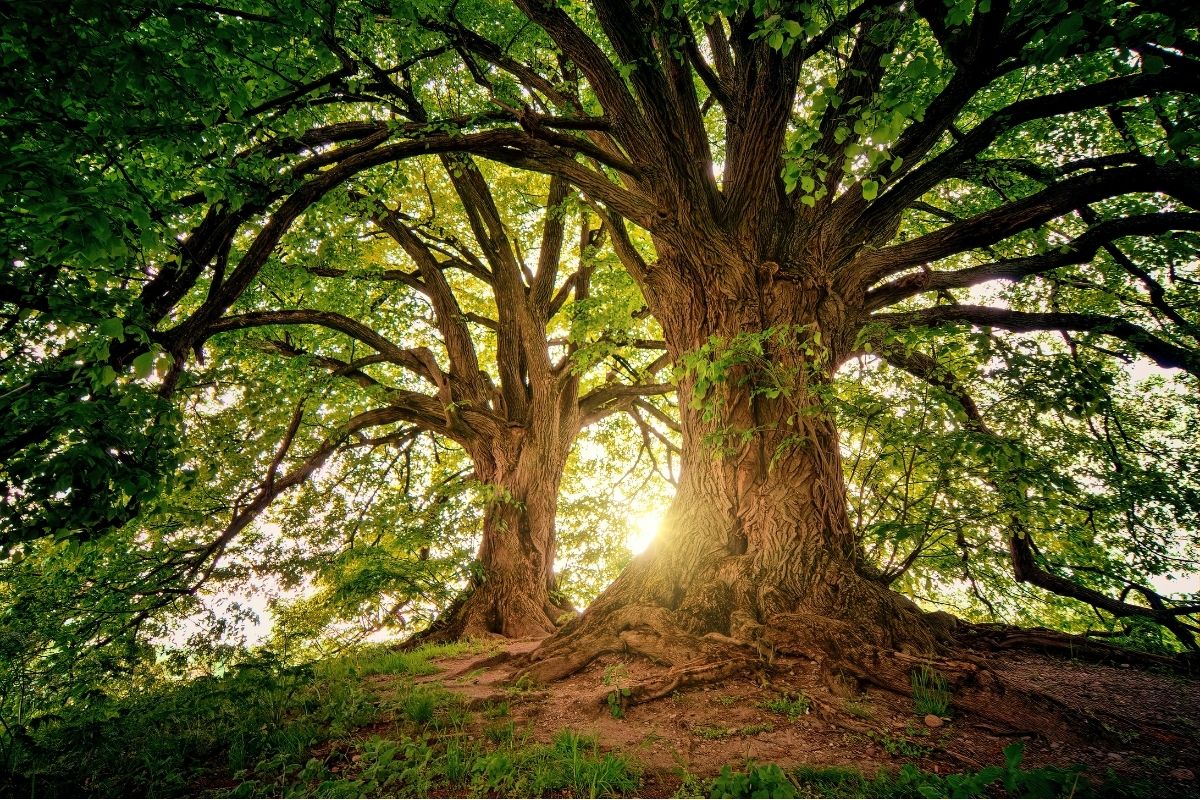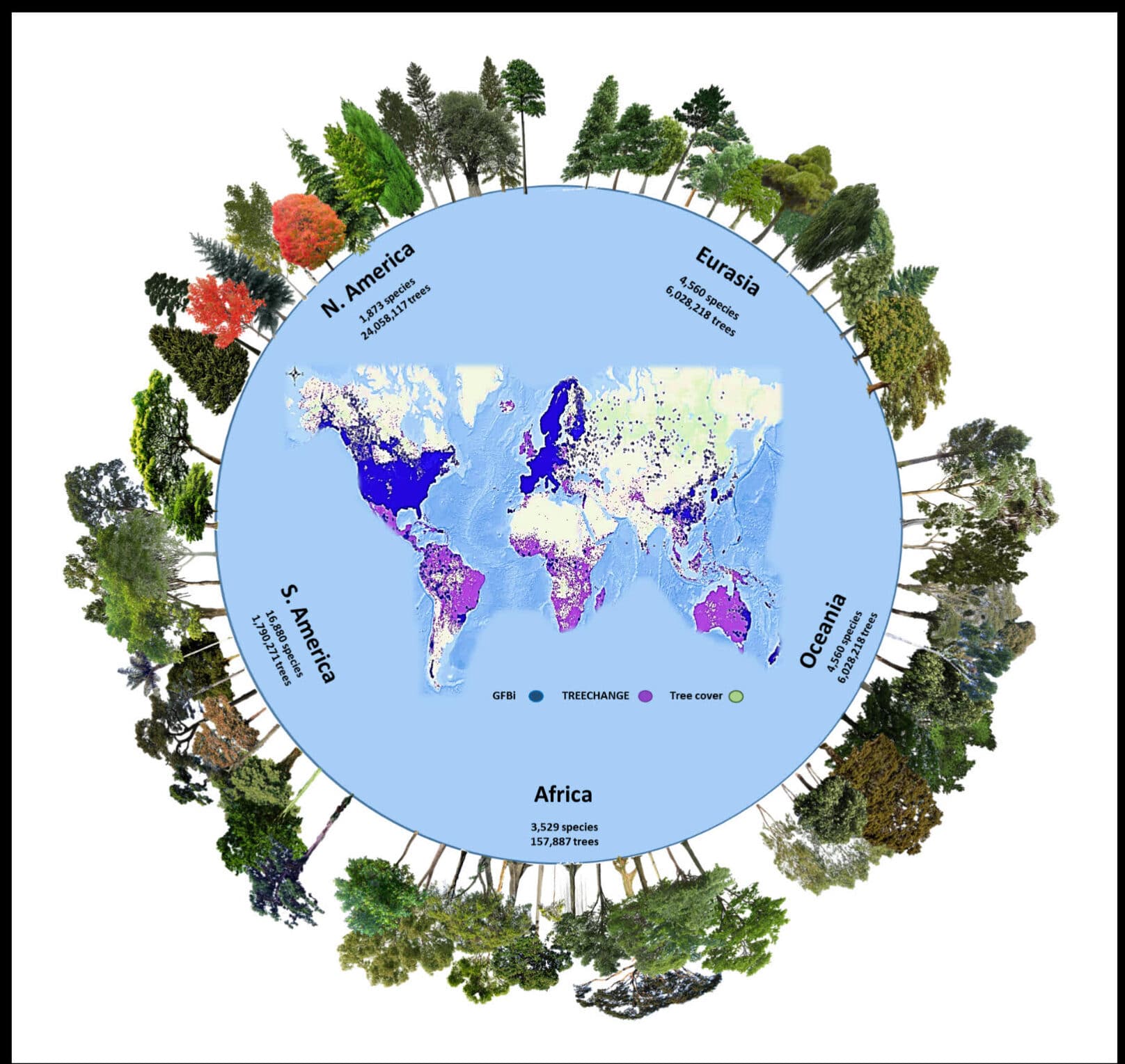
The actual number of tree species on our planet is estimated to be 14 percent higher than previously thought.
You would think that by 2022 we would have mapped all tree species that grow on Earth. But nothing turns out to be less true. Researchers come in a new study to the conclusion that a surprising number of tree species are still waiting to be discovered. And so they say it’s more important than ever to describe them before they possibly disappear for good.
Spine
Trees are extremely important for our earth. They store 50 percent of the world’s terrestrial carbon and provide a buffer against extreme weather, such as hurricanes and tsunamis. In addition, they purify the air and filter the water, while also providing food for millions of species of birds, mammals, amphibians, reptiles, insects and microorganisms. In short; trees are the backbone of the natural ecosystem. Extensive knowledge of the richness and diversity is therefore essential. Especially because many tree species are now threatened with extinction as a result of deforestation and climate change. But a new study shows that our knowledge is likely lacking.
Not so long ago, researchers sounded the alarm. They discovered that currently a third (17,500) of all known tree species in the world (more than 60,000) are threatened with extinction. This means that there are twice as many endangered tree species worldwide as endangered mammals, birds, amphibians and reptiles combined. The reason so many trees fight for their survival? Agriculture, (illegal) logging and livestock farming are the biggest threats. According to the researchers, one in five tree species is used directly by humans for food, fuel, timber, medicine, horticulture and more. In addition, many trees are threatened with extinction as a result of over-exploitation and mismanagement. But climate change and extreme weather are also emerging threats.
As far as we know, around 64,100 tree species can be found on Earth. But the true number of tree species is likely much higher, researchers conclude. In the study, the researchers combined data sets and used new statistical methods to estimate the total number of unique tree species on a continental and global scale much more accurately than before. And it shows that there may be some 73,274 tree species on Earth. This means that at least 9,200 tree species are still waiting to be discovered.
How is that possible?
The actual number of tree species on our planet is therefore estimated to be 14 percent higher than previously thought. But how come we didn’t know about that until now? “Most of those ‘undiscovered’ species probably live in remote areas,” researcher Peter Reich told Scientias.nl from. “Possibly mainly in tropical and subtropical forests where there are not many people and certainly few scientists. For example, think of the Amazon rainforest, areas in the Andes and Central Africa and remote tropical forests in Southeast Asia and Oceania. Also on many islands, many tree species are probably still waiting to be discovered.”

Distribution of the number of tree species per continent. Image: Cazzolla Gatti et al. in PNAS, 2022
Most of the undiscovered species are believed to be very rare; they occur in small numbers and have a limited spatial distribution. And that makes the undiscovered species particularly vulnerable to, for example, deforestation and climate change.
Rare
“A third of known species are rare,” Reich says. “However, we suspect that a much larger proportion of unknown species are too. And that is a major concern. For example, if there are 500 species A trees in 10 locations and five million species B trees in 1000 locations, for example, a forest fire poses a much greater threat to species A than to species B. Second, species are usually rare because they have adapted to only a limited number of conditions – otherwise they would be more abundant. At the same time, it means that they are less resilient and flexible and less able to cope with threats, such as the changing climate. This combination of small numbers and less livestock power may make an as-yet undiscovered species even more scarce and put it at even greater risk of extinction.”
South America
The researchers think that about 40 percent of undiscovered tree species are in South America; more than on any other continent. This continent is therefore repeatedly mentioned in the study as being of particular importance for global tree diversity. South America is also the continent with the highest estimated number of rare tree species (about 8,200) and the highest estimated percentage (49%) of continental endemic specimens, meaning species are only found on this continent. “In addition to the 27,000 known tree species in South America, there may be another 4,000 species there that have yet to be discovered,” Reich said.
Describe scientifically
The researchers underline that it is important to scientifically describe the undiscovered species. In addition, the study lifts a corner of the veil on where to start looking. But even more important is to protect terrestrial forests, in order to save the undiscovered species from extinction. “The fact that they are part of nature without us knowing ‘who they are’ is far more important to preserving the function of forests and the services they provide to humans than scientifically describing these species,” Reich emphasizes. The findings also show which forests we should take care of. And the forests in South America are number one. “This is especially true given the forest crisis there, caused by deforestation, wildfires and climate change, among other things,” Reich said.
All in all, the results show that, even in 2022, there is still plenty to learn about the richness of nature and its diversity. “Thanks to the study, we now know how rare both known and unknown tree species are,” Reich said. “And that means protecting forests is more important than ever.”
Source material:
“Number of Earth’s tree species estimated to be 14% higher than currently known, with some 9,200 species yet to be discovered” – University of Michigan
Interview with Peter Reich
Image at the top of this article: Johannes Plenio via Pexels